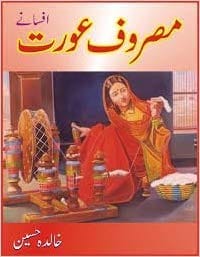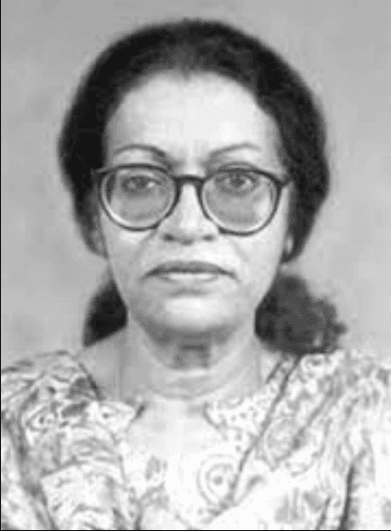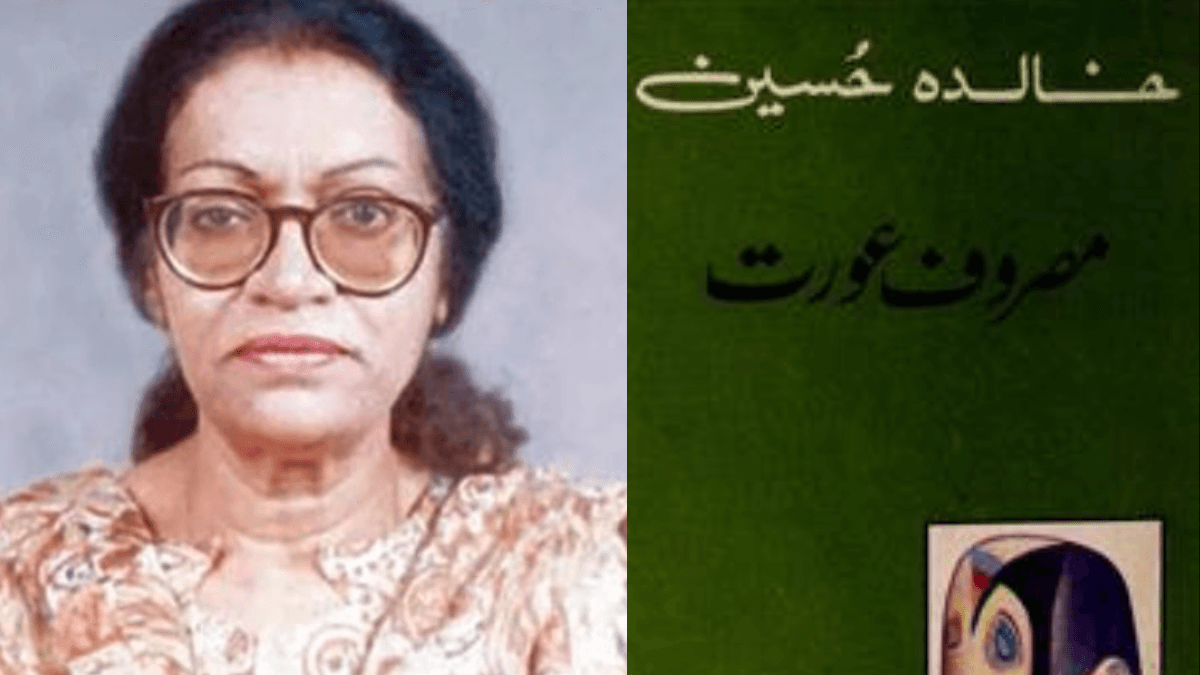Stories with sweeping conclusions don’t signify rational equality. Only the tight-knit yarns of hope and distress that pay particular attention to the overlooked and deprived details of life essence can be classified as an honest attempt to rectify the historical injustice against women.
On this parameter, Masroof Aurat is a humanitarian story collection by the legendary Urdu storyteller Khalida Hussain that comes up with spine-chilling philosophical flights in its process of mixing up the life struggles with filaments of ‘existential orbit,’ and breathtaking metaphorical language.
The revolutionary hook about the book is its power to acknowledge the existential complications with a perfect inclusive place for women and the utmost promising subtleness of emblematic style. Between the lines, some soft-offensive questions about social conditions, status quo, suppression of identity, and tragic overthrows of emotions silently explode into different psychological slits. Often rooted in staunch political ground realities, the story-development climbs up the ladder of dreams, spirituality, and abstract aspirations with a noteworthy female presence.
From the time of Khalida Hussain (1937-2019) till the present scenario, and despite the great bequest of thoughtful creative works, the Urdu literature not only lacks resilient female voices but also the women-orientated narratives. While these story pearls attentively challenge the patriarchal rigidity of those bigot poets and writers who are still glued to the misogynist aesthetics of objectifying women’s physical appearance without mentioning their personal, social, or political entity. This collection of 18 outstanding short stories with powerful plots of ‘Lafz,’ ‘Doli,’ ‘Izhar-E-Wajwa,’ ‘Surang,’ ‘Kaan,’ ‘Masroof Aurat,’ ‘Zawalpasand Aurat,’ ‘Ism-E-Aazam,’ ‘Aag,’ and other milestones recognises the inner-feelings and fears of human-beings; meanwhile simple-complex women characters address the ‘time and space,’ that they truly require and deserve to explore their purpose of being.
Masroof Aurat, a dive into philosophical justice and women’s struggles
As whispered in the first short story, ‘Ek Dafa Ka Zikar Hai,’ good stories are like drops of blood, slowly dripping from the neck and blending into the vast river of blood to become a gemstone. Dreamlike plots in the collection portray the essence of exhausting human struggles, with particular focus on identity, freedom, persistence, and sovereignty, where women are either limited or prohibited and insecure. It’s important to note that Khalida Hussain does not believe in direct attacks on anything, but her tactful approach of constantly voicing the crucial concerns around the inner struggles of women grows into silent rumbles against the roots of visionary sexism.

A research-paper on the “Issues Of Identity And Sense Of Insecurity In Khalida Hussain’s Short-Stories With Reference To Existentialism” states that her stories “reflect the individual’s loneliness and uncertain mortality in their search for their self, and the fear of insecurity and failure renders them helpless and constrained.”
The stories of Masroof Aurat are mostly told in first-person. Protagonists ponder over their purpose of being and explore their thirst to follow the truest possible path of existential capabilities. In its signature story, Masroof Aurat, a woman highlights the hazards of time and responsibilities that restrict the possibilities of endorsing a profound-meaningful purpose of life.
“Ek kaam hai jiske liye paseene ki nahin, wajood ki zaroorat hai,” (there is a work that does not need sweating but an existence) she states, raising questions on the endless liabilities of worldly chores that never allow women to follow their passion and dreams. Likewise, the main character of ‘Zaval-pasand Aurat,’ highlights her personal journey and the related belittling repercussions that compel one to compare her accomplishments with that of a petite insect like fly. While the story ‘Gajsar,’ explores the boundaries of patriarchy in two parallel themes where struggles of a lower-class driver’s wife sneak a peek into the life of a high-class woman, Naseem Siraj, depicting the role of different bigot boundaries in two different but connected surroundings.
Such short-stories with less crowded ground and abundant monologues provide ample opportunity to recheck the real barriers of life and soul, meanwhile the interlaced sub-themes underline widespread patterns of irrational judgements, consumerist sensitivity and the trend of demeaning visionary struggles of women counterparts.
The desire to seek meaning and great consciousness needs an equal representation but most of the time only men are given the opportunity to consider them. However, our society has emphasised on restricting the feelings of men but this repression is widely recognised, on the other hand their women equivalents have been oppressed, disregarded and overlooked at once. Men characters in stories like ‘Izhar-E-Wajwah,’ and ‘Safar,’ are writers but they feel stuck and limited by frames; on contrast, the women lead in ‘Surang,’ and ‘Kaan,’ jiggle through a bit more miserable situations and consequently they face more gruesome inner-hurricanes.
Still, Khalida Hussain has been amazing at balancing the dark traumatic conditions at the end with a loop of hope. The ‘door opening towards street,’ and ‘finding the vastness of time,’ are the figurative phrases where strong but isolated female protagonists find a way to deal metaphysical meaningful spurs.
The feminist depiction of marriage and social conditioning in Masroof Aurat
The aesthetics of commonplace traditions draw the female protagonists in this gem box, but eventually they suffer from the shallow social system or raise concerns about their visionary experiences to arrive at a tantalising and revolutionary conclusion.
For instance, the central character of the story ‘Doli,’ feels overwhelmed by the flamboyant decoration and preparation of her marriage celebration, but in due course she decodes the secret of an empty ‘Sandooq.’ By comparing the ‘Doli,’ (Palanquin) with a ‘Sandooq,’ (Box) to take her far from the dazzling lights, Khalida signifies the structures of ‘boxed but adorned slavery,’ that floods in the life of married women. Molding the story to much dark practicalities, she rubs out the romanticism of cherished poems like the Palanquin Bearers.

Relationships also play a significant role in determining the climax, collapse and central peg of existentialism. Kulsum’s habit of being sleep-obsessed in the story ‘Zaban,’ demonstrates the psychological fatigue, boredom and draining nature of relationships meanwhile her husband suffers with a defined sickness of insecurity and an unknown-vague fear.
‘Shab-E-Chragh Ki Justaju,’ (Search for the lamp of night) often demands a rebel ‘Hunkar,’ (roar) in this unique surreal story collection as the women shown in ordinary set-up are not so ordinary. They have robust visions and are always resilient to ‘unlearn and scrape-down,’ the layers of social conditionings.
A hallmark with benevolent warmth: Where feminism meets humanism
The story box Masroof Aurat does not differentiate between humanist and feminist values. Male characters also step forward to retune their spirit but they are not permitted to overpower or dominate women. Sometimes Khalida leaves a story on the turning-point to serve a placid pause to the readers. In ‘Akhiri Khwahish,’ the hangman resigns from his job after confronting a strange ‘last wish,’ of a man who could only wish to gobble ‘Gulab-Jamuns,’ and this incident stirs up the sensitivity and strong empathy.
Even when addressing somebody, the characters seem like talking to themselves and even though the story hook remains abstract it feels mandatory to fight better because injustice uses all the concrete and abstract mediums to establish oppression. Also, there are no deviations of routine portrayals or scenery details in ‘Masroof Aurat making it a compact praiseworthy masterpiece with wisely chosen sparks of egalitarian and liberating humanity.
Before Khalida Hussain, the state of feminist tenet in Urdu Literature was either direct political or null. But by setting a new trend through equal representation and zero discrimination on the podium of ‘reflective philosophical storytelling,’ the Masroof-Aurat successfully unbolted the personal and thoughtful interrogations to pave a way for better insightful changes. Indeed, the struggles of ‘bearing the pain of life,’ and ‘invoking meaningful fluctuations,’ preserve a universal appeal and a pious intent of healing the wounds by identifying the wounds.
About the author(s)
Mariyam (she/her) has a thirst for journalistic and creative stories that consist of feminist, humanitarian, contemporary or artsy themes. She hails from a Political Science, English Literature academic background and an Urdu-Hindi crux.
For her, words are a visionary sovereignty to stand on and find the meaning of being while journalism is the only place where truth comes with utmost clarity, facts and data. When not weaving pointy narratives or poetic expressions, she loves mingling with cats or delving into photography, cinema, music, daydreaming and stargazing.





